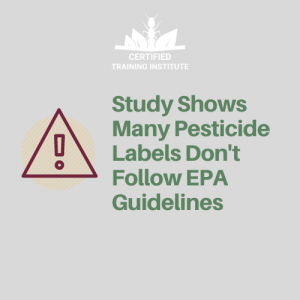Study Shows Many Pesticide Labels Don't Follow EPA Guidelines
Published on November 13, 2020 by Nate Bortz

According to a study by the Oregon State University (OSU) Extension Service, over 30% of pesticide labels fail to follow Environmental Protection Agency (EPA) recommendations and provide incorrect information about their toxicity to honey bees. The research, which was discovered by an unsuspecting young student, may be used by regulators to identify labels that need amending.
"I kind of stumbled onto this research project by accident," said Matthew Bucy, now a pesticide registration specialist at the Oregon Department of Agriculture.
While working as an OSU undergraduate honors student, he read through hundreds of pesticide labels in order to update a data table. After studying 232 insecticide labels, Bucy discovered a clear pattern. About a third of the labels deviated from EPA recommendations, and many didn't list accurate details about their residual or acute toxicity.
Rose Kachadoorian, a pesticide specialist at the Oregon Department of Agriculture (ODA), and formerly an adviser on Bucy's thesis committee, said the pesticides weren't misbranded or mislabeled intentionally; "they're just old." "A lot of the language is what we call legacy language," said Kachadoorian.
Bucy's "accidental" discovery turned into a major research project that has continued well past his graduation. Kachadoorian, Bucy, and experts at the ODA formed a working group called The Oregon Bee Project to address the labeling problem. While they continue to hold workshops that try to educate pesticide applicators, they expect changing label language will take time.
Kachadoorian said her ultimate vision is to create a standardized labeling system for pesticides.
"Look at FDA pharmaceutical labels, she said, they all have similar formatting."
"You know where to look on the label to find things like dosage and possible side effects. But pesticide labels look different across companies, making information harder to find."
Bucy said his groundbreaking research as a student led to his job in pesticide work at ODA, where he hopes to continue helping the agricultural community.
"I read a few hundred labels. Why not read a few hundred — or thousand — more?" he said.
While you may never have to read hundreds of labels all at once, make sure you understand the ones you do need to read with our Reading the Pesticide Label: Beyond the Basics video course!
You'll find that course, and many others, included in our Oregon Pesticide Applicator Continuing Education Bundles — register now before the December 31st deadline!
You can read the entire unedited article here.
